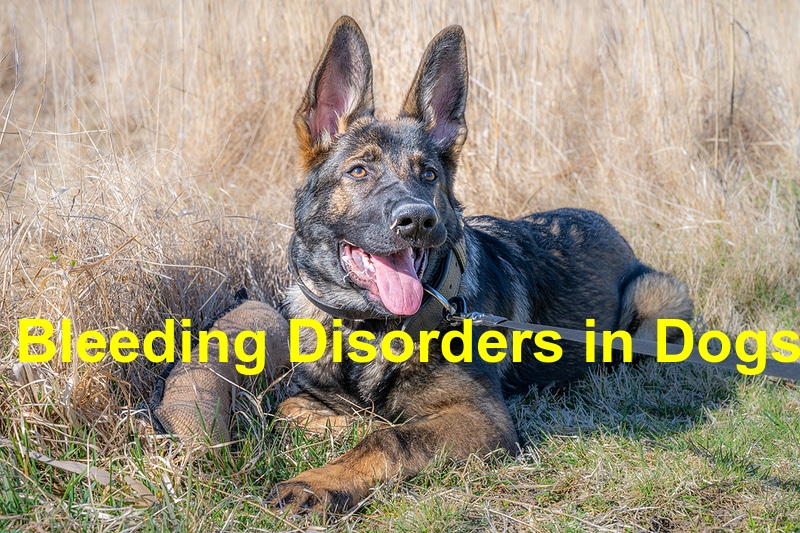Dogs can develop bleeding disorders at any age. However, some breeds often have higher vulnerabilities to bleeding conditions. Below is a review of a common blood disorder known as vWD that affects many dogs.
What is Von Willebrand’s Disease?
Von Willebrand’s Disease or vWD refers to a hereditary blood disorder that occurs due to deficient von Willebrand Factor, one of the essential glycoproteins required for healthy platelet formation at the site of a blood vessel injury. Furthermore, vWF is also a coagulation Factor VIII carrier protein, which is necessary for proper blood clotting. When a dog doesn’t have sufficient vWF, then it results in platelet clumping or stickiness and that is what causes excessive bleeding after an injury.
VWF is considered an autosomal trait that is equal in both male and female dogs. The severe forms of vWD, Type 2 and Type 3 are recessive, whereas the type 1vWD is incompletely dominant. Some dog breeds are vulnerable to developing vWD disorder and they include standard poodles, golden retrievers, German shepherds, Doberman pinschers and Shetland sheepdogs.
Common symptoms of vWD
Here are the common symptoms of vWD in dogs:
- Skin bruising
- Nosebleeds
- Gum bleeding
- Bloody urine or blood in feces
- Excessive vagina bleeding
- Anemia due to excessive bleeding
- Excessive bleeding after trauma or surgery
Causes of vWD
The main cause of vWD is due to inherited genetic mutations that affect the production, release and stability of the vWF factor in dogs.
Diagnosing vWD
The diagnosis process for vWD typically begins with a comprehensive physical examination of your dog by a vet. Your vet will also consider the dog’s health history while performing the necessary tests like blood chemical profile, blood count, an electrolyte panel and urinalysis. Two additional tests, the BBMT and PFA 100 tests can also be used to identify vWF deficiency in dogs.
Treatment
The treatment of vWD typically involves transfusing fresh blood, cryoprecipitate and fresh plasma to deliver vWF into the blood. The use of component therapy, which involves fresh plasma, is ideal for preventing surgical prophylaxis and also for non-anemic dogs. That is because it prevents red blood cell overload and sensitization. Dogs with severe vWD often require several transfusions to prevent or manage bleeding.
Conclusion
Most dogs can live good quality lives even if they have mild or moderate vWD. However, dogs that suffer from the more severe versions of this condition will often require a blood transfusion if preventive care fails to stop spontaneous bleeding or even for surgery. Contact your vet if your dog experiences excessive bleeding.
References: Wagwalking, PetMD, VetCornell





